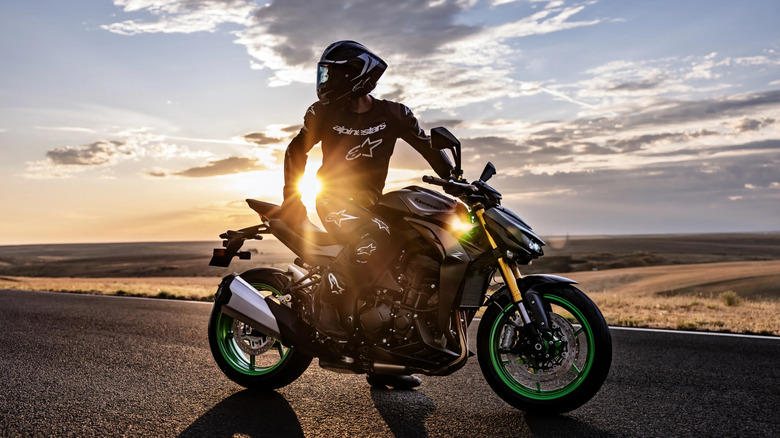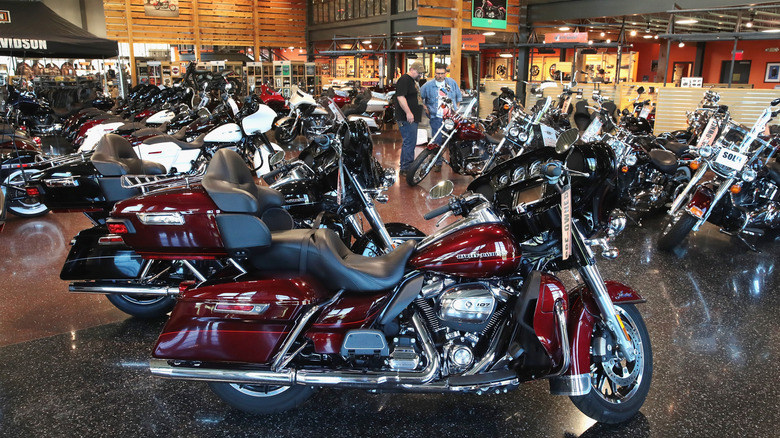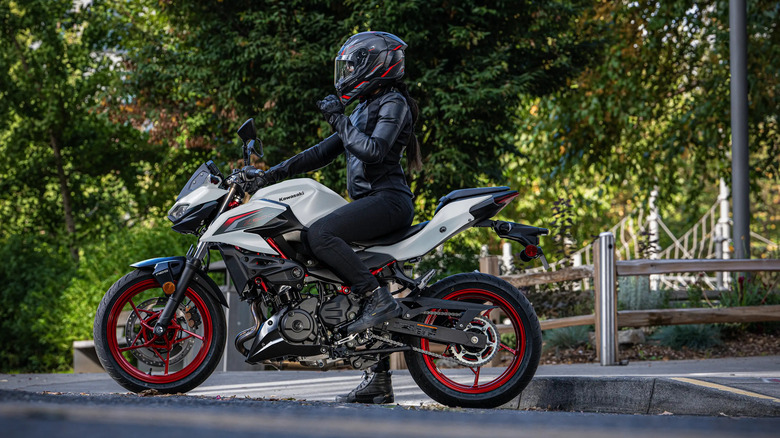How To Know What Size Motorcycle Is Best For You
There's a wide range of available new motorcycles these days. There are so many bikes, in fact, that there's likely one that will fit just about every rider and every scenario. From tiny, barely street-legal mini bikes all the way up to ultra-heavy, continent-crossing cruisers and everything in between, motorcycles come in every shape and size. Even within several different motorcycle segments, there are different engine sizes that will suit different needs. Sport bikes, for instance, often come with 600cc, 750cc, 1000cc, and even 1200cc engines, and just about everything in between. Obviously, this can make picking the right-sized bike a tough task.
Assessing your needs should start with assessing your skill level. Typically, the safest motorcycles for new riders are the smaller ones with limited power. Smaller, less powerful bikes tend to be a bit less expensive up front, and they get better fuel economy, all of which should be helpful for new riders.
Because larger bikes are more expensive and more powerful, they're also typically more expensive to insure. It's also important to be honest with yourself about the kind of riding you plan on doing. If you don't want to spend any time on the highway, there's no need for a big bike with lots of power. The dimensions, features, and price are all big parts of the selection process, so we've broken those down to help you narrow down your search.
Check the dimensions, then take a seat
The best way to determine if a bike is right for your body is to sit on it and get a feel for the controls. Before you go visit a motorcycle dealership, however, the spec sheet can help. A good place to start is with the seat height of a motorcycle. Typically, seat height can be compared with the inseam measurements of your pants to see if you're a match.
For instance, if you have a 32-inch inseam and the motorcycle you're looking at has a seat height of 31 inches, you should be able to firmly place both your feet on the ground while sitting on the motorcycle, which is good for slow-speed control.
Moreover, the width of the seat can also determine whether or not you fit on the bike. A wider aftermarket seat will make it a bit harder to flat-foot on a bike than a thin stock seat, and vice versa. It's also worth noting that when riding, you'll be wearing gear that can add a bit to your height, like boots, and the bike will lower a bit when you sit on it and compress the suspension. On your dealership visit, try to wear your riding boots to get a proper sense of where you'll land. Make sure you can also properly reach the foot controls and the handlebars before buying.
Bigger bikes tend to come with the latest tech and features
Dimensions are important, but they aren't everything. Because they're typically more expensive, larger and more powerful motorcycles often come with the latest and greatest features. Cruise control, quick shifters, and TFT screens are all examples of equipment often restricted to the more expensive models in a manufacturer's lineup. If you want the latest and greatest tech a brand has to offer, you may be looking at something larger. Kawasaki's Z lineup of motorcycles, offers a good example of this difference, with the entry-level Z500 and the better equipped Z1100.
The Z500 SE has an MSRP of $7,049, including a $650 destination fee, while the Z1100 SE starts at $15,839. Obviously, some of that price difference comes the difference in power, as the Z500 puts out 51 horsepower, while the Z1100 produces 134 hp, but there's more to it. The Z500 has a relatively simple suspension with adjustable preload in the rear and ... not much else.
The Z1100 is much more customizable, with adjustable compression, rebound, and preload for the front, and rebound damping and remote spring preload adjustability in the rear. The Z1100 also gets a standard up-and-down quick-shifter, while the smaller Z500 does not. So, if you're looking for more creature comforts and features, it might be worth looking for something larger. There are other bikes in between these two extremes, though, so don't think you have to go all the way up the ladder just to get upgraded suspension, or anything else, for that matter.


